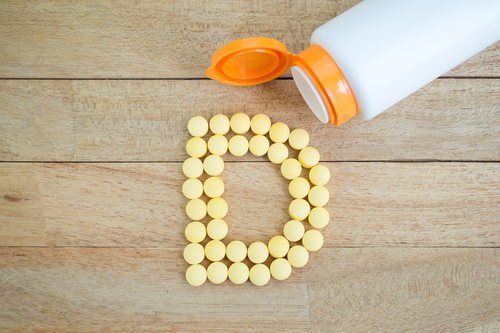Do You Need To Take Vitamin D Supplement (Even When You Live In A Tropical Climate)?
By Dr. Deyo FamuboniPublished: March 8, 2016

These days, most people have heard of vitamin D either from family or friends or in the media. It appears to be one of the most widely discussed vitamins currently. This is understandable as it is associated with so many bodily functions and linked to the prevention of many illnesses. We all have so many questions surrounding this ‘hot’ vitamin so here are some answers to the common ones.
Can I be deficient in vitamin D in a hot climate?
Living in a hot or tropical climate, where the sun shines most days, one would expect our vitamin D levels to be normal. Research, unfortunately, suggests that’s not the case. Insufficient levels are common and appear more so in children.
A combination of our culture of covering up the whole body with clothes and the need to preserve our skin’s complexion means most women do not expose much part of their skin to the sun, the main source of the type of vitamin D the body requires to work at its optimum.
Protecting our skin from the sun is important — it prevents skin aging and helps it maintain its elasticity and complexion. However, this should be done in moderation. For optimal vitamin D levels from the sun, we need about 30 minutes of sun exposure — limbs and face — daily.
Research suggests you can use sunscreen and still absorb some vitamin D. This provides skin protection while getting some vitamin D. The darker your skin is, the more sun exposure you need to absorb enough vitamin D.
People living in a cold climate are unlikely to absorb any vitamin D in the winter months from the sun even on a sunny day. The recommendation is to take a regulated supplement especially in the autumn/winter. Good amounts of calcium in the diet is also important and can be attained from foods such as dairy, green leafy vegetables like spinach and nuts such as almonds.
How do I know if I am low in vitamin D?
The most common way people find out they are low in Vitamin D is by doing a blood test. This is usually arranged by your health care professional if you have symptoms such as general aches or pains, your muscles feel weak or you have a specific pain in your back, joint or bones.
Some people feel generally tired and lethargic when their levels are low. They may notice changes in the shape of their hands or feet or knees. Children, especially if very low in vitamin D, can develop bow knees and a condition called rickets, the end result of severe vitamin D deficiency. In adults, this is called osteomalacia. It is therefore vital to get checked out should you have these problems.
Are there any long-term problems with low vitamin D?
Once bone changes have happened and are obvious to you, it can be difficult for these to be reversed even with vitamin D replacement. Also if you have been told your bones are already thinned out for other reasons (a condition called osteoporosis), having a low vitamin D can make this worse and result in fractures from minor accidents.
Low vitamin D has been implicated in so many conditions and while it may be the cause of some of them, current research suggests an association with many others. These include chronic conditions such as asthma and cancer.
Should I take a Vitamin D supplement and which one?
If you live in a hot climate and are unable to experience the recommended sun exposure, taking a supplement is advisable. Having a good diet with adequate amounts of calcium is also required as vitamin D principally helps the absorption of calcium to our bones and tissues.
The type of vitamin D taken appears to be important if you want to achieve the best level. Studies have shown that taking it in the form of vitamin D3 gives better levels than any other forms. This is the form we absorb from the sun.
Some people may have problems absorbing vitamin D through the gut especially if they have other conditions such as gluten sensitivity or too much bacteria in their bowels. Discussing this with your doctor is therefore advisable. If you are given a high dose supplement based on your blood levels, it is worth having a calcium check within a few weeks of starting it to make sure your level isn’t too high.
After this, the recommendation is to check your levels between 3 to 6 months depending on your specific condition.
Can I get vitamin D from my diet?
There are various food sources of vitamin D, however the sun is best. Food sources include oily fish such as sardines, nuts such as almonds. Many people of African descent do not digest lactose (dairy) well and may be low in calcium if they don’t have other calcium rich foods in their diet.
In general, eating a good diet with nuts, fish and lots of green leafy vegetables should improve calcium levels. Having this regularly should help with improving the levels of both calcium and vitamin D. It’s worth mentioning too that some foods such as cereals come fortified with vitamin D.
Like what you're reading? Sign up for our free newsletter and never miss a post! Plus get a FREE digital version of our Issue No.10 with sign up.

- Dr. Deyo Famuboni Answers Your Age-Specific Health Checkup Questions - October 6, 2017
- Do You Need To Take Vitamin D Supplement (Even When You Live In A Tropical Climate)? - March 8, 2016
- Cervical Cancer And The Nigerian Woman - January 27, 2016
- Your Ultimate Guide To Vaginal Health - January 12, 2016
- Domestic Violence — Let’s Talk About It - December 1, 2015














